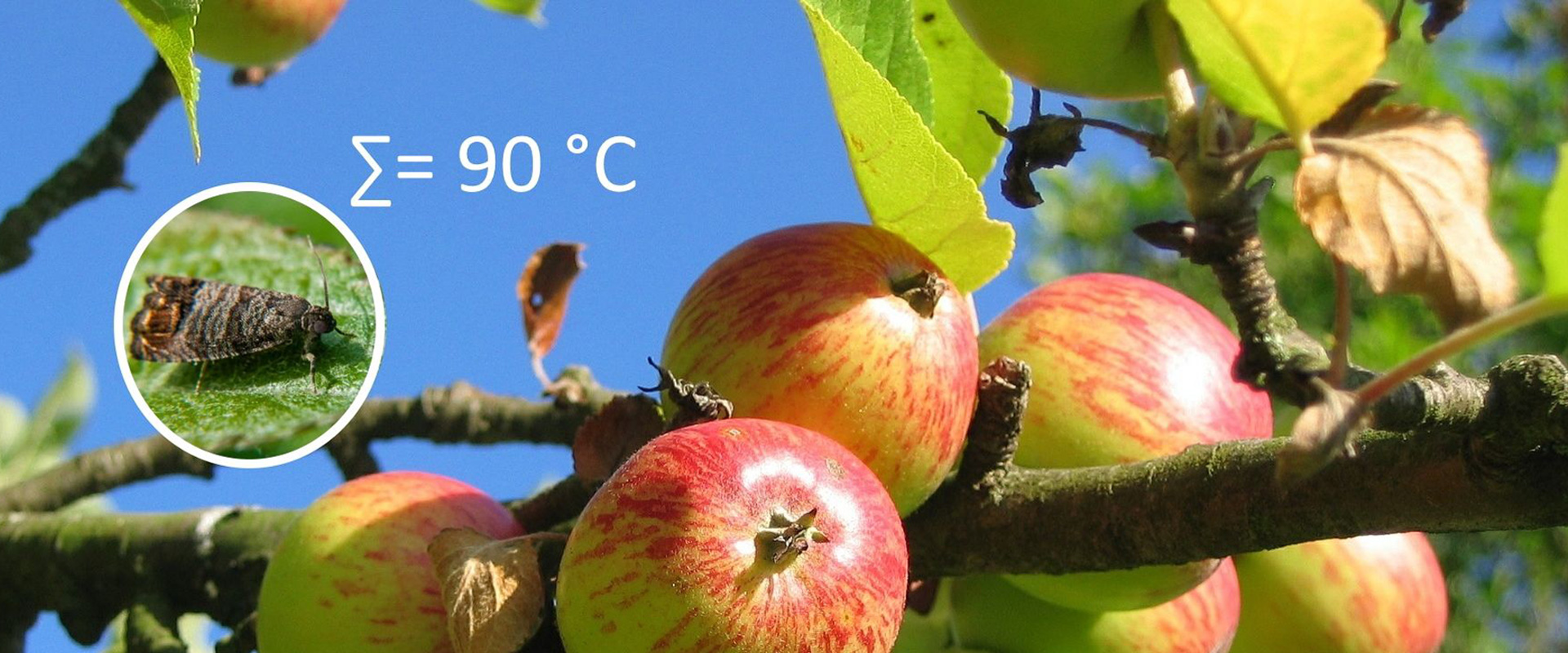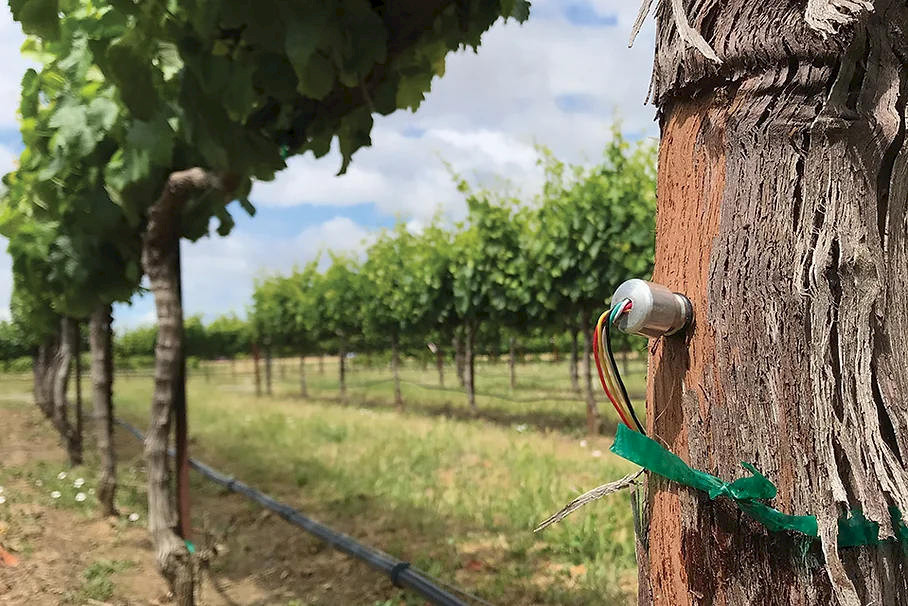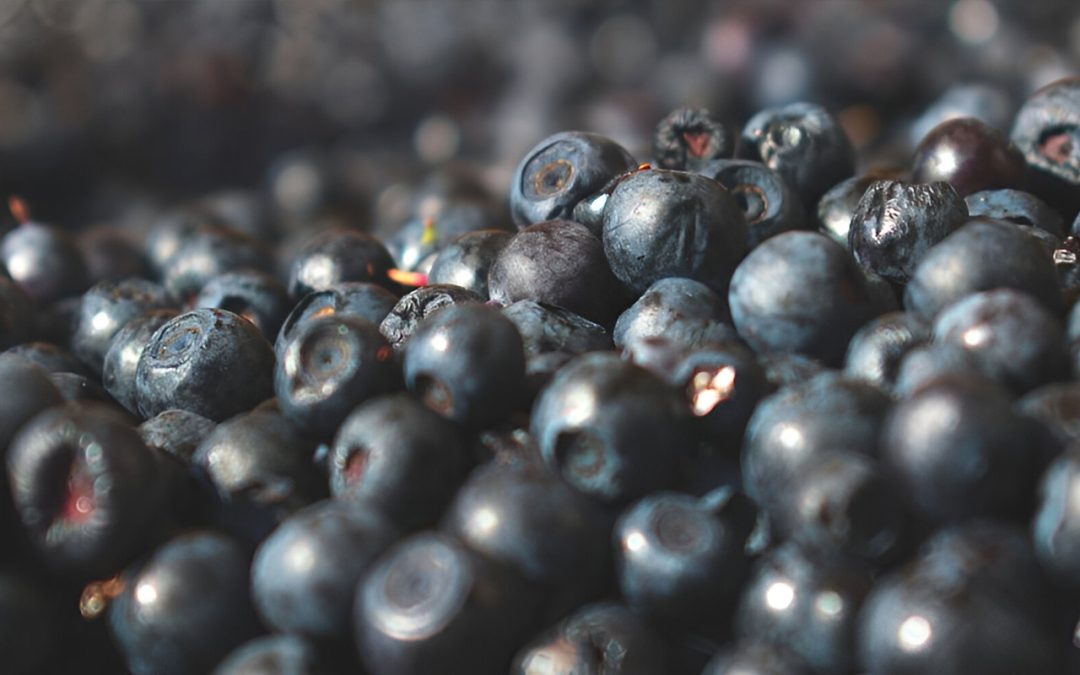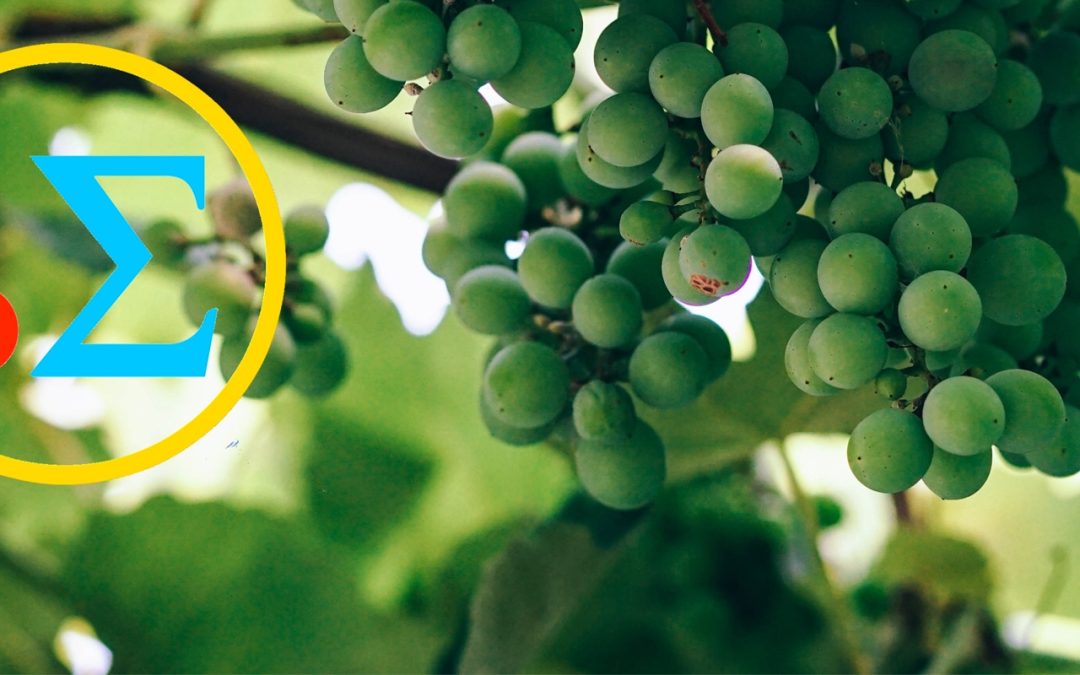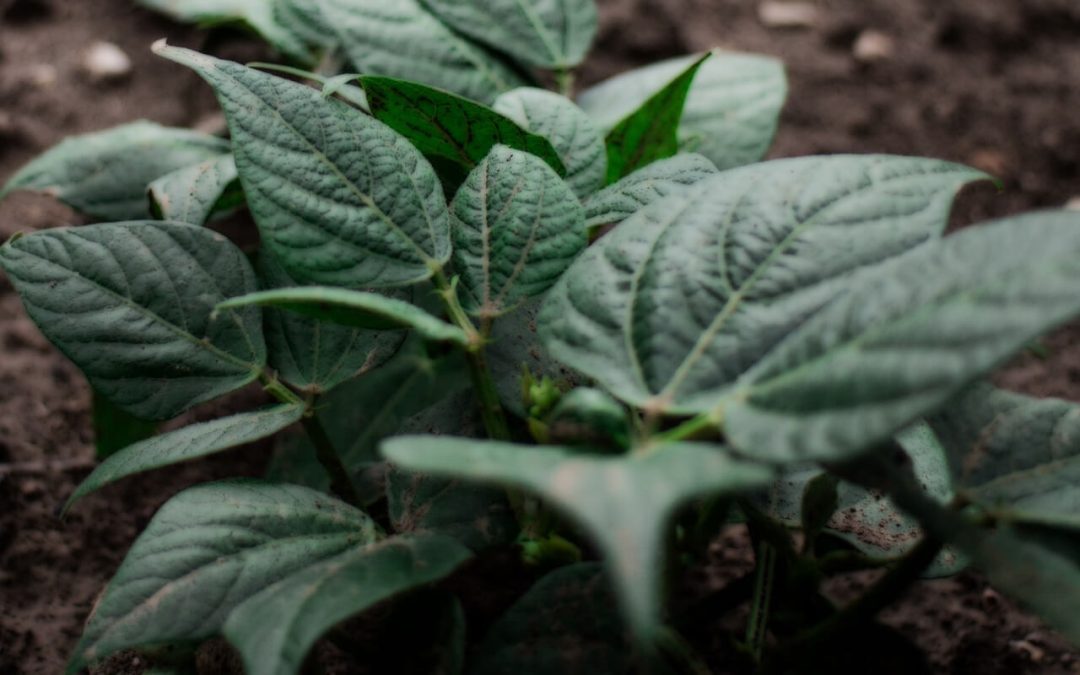The degree days represents accumulated heat energy over a period of time. Heat is one of the most important factors in the plant and animal world. Considering the fact that the heat cannot be measured, while the temperature can, a model of degree day has been developed. The accumulated air temperature over a period of time determines the growth and development of plants.
To use the daily temperature for determination of phenophases, it was necessary to develop a model of degree days. According to the definition, degree days are a measurement that reflects on the accumulated heat above a specific temperature threshold in a particular period: day, month, in the warm or cold part of the year, from one to another developmental phase of a plant. Degree days are calculated by taking away the threshold from the average daily temperature if we determine that the temperature threshold is 10 °C and the average temperatures in 5 days were: 12, 14, 9, 11, 15 °C, this would mean that the degree days were 2, 4, 0, 1, 5 °C and that the degree days for that period were 12 °C. Base temperature is determined based on the need, as in determining the maturation of grapevine, a biological minimum of 10 °C is taken.
Examples of using the degree days in agriculture can be used for different purposes:
- comparison of agricultural regions and the season,
- when starting a plantation and choosing varieties and types,
- development of plant diseases and pests,
- predicting the developmental phases of plants,
- determining the moment of performing agrotechnical operations and other.
Temperature determines the developmental rate of many organisms. Pests require a certain temperature to develop from one stage to another stage of the life cycle. The amount of heat required for the overall development of a particular organism is constant and varies between species. The development of insects begins when the temperature exceeds the lower development limit, that is the base temperature. The development rate increases with temperature rise and vice versa. Depending on the weather conditions, the time required for development may vary from year to year. The calculation of degree days in pests is essential in order to be able to orient ourselves in the development of pest generation and in order to use the preparations for their suppression as efficiently as possible. This often results in a reduction in the cost of pest damages.
The most important pests of the apple are the codling moth (Cydia pomonella), european red mite (Panonychus ulmi), San Jose Scale (Quadraspidiotus perniciosus) and Woolly apple aphid (Eriosoma lanigerum).
The codling moth (Cydia pomonella) hibernates as an adult caterpillar in the cocoon under the bark and in various cracks in the stem and thicker branches. Pupae usually start in April. The biological minimum for the development of the codling moth is 10 °C. The starting date for calculating degree days is January 1, from which date average daily air temperatures above 10 °C are summed. At the end of April, the butterfly takes off, in May it is much more intense and lasts until the end of June. From the caterpillar stage to the butterfly, the required sum of effective temperatures is 100 °C. The development of a caterpillar from eggs requires a degree days of 90 °C, while the development of a generation of codling moths requires a degree days of 610 °C. In May, when a critical number of butterflies (3-5 butterflies) are caught on the pheromone trap, the degree days begin to count. The insecticide is applied when the sum of effective temperatures reaches 70 °C and this applies to insecticides inhibitors of chitin biosynthesis, while contact insecticides need to be applied when the degree days reaches 90 °C. In Croatia, the codling moth has three generations.
European red mite (Panonychus ulmi) over winter in the stage of winter eggs, that occurs as early as August. For European red mites, the biological minimum of development is 10.6 °C. At the end of March and April, larvae begin to emerge from the eggs. The degree days required for egg development is 69 °C, while for larvae is 25 °C. The generation time from egg to adult spider requires a degree days of 140 °C. Degree days required for egg-to-egg production is 161.8 °C. The species has 6 to 7 generations a year. In the summer months, it is recommended to treat if more than 8 spiders are found per leaf. Winter spray application is good to do at the beginning of vegetation with mineral oils. Also, selective acaricides are used at a time when about 30% of the larvae hatch from winter eggs.
| PEST | MONTH | STAGE | BASE TEMPERATURE | DEGREE DAYS |
| Cydia pomonella | End of April – beginning of the May | Caterpillar – Butterfly | 10 °C | 100 °C |
| May | Egg – caterpillar | 10 °C | 90 °C | |
| The whole life cycle of a generation | 10 °C | 610 °C | ||
| Panonychus ulmi | End of March – beginning of the April | Larva | 10,6 °C | 25 °C |
| Egg – adult insect | 10,6 °C | 140 °C | ||
| Egg – egg (the whole life cycle) | 10,6 °C | 161,8 °C |
San Jose Scale (Quadraspidiotus perniciosus) overwinters as a larva, most commonly in II. stage. If other stages enter in the winter time, they will die. Also, there is a high natural mortality rate of II. stages that average 30 to 40 %. In the spring, larval development splits. After several changes, males emerge from some larvae and III. emerge from others stages that develop into females. After copulation, the females lay live young. One female lays 80 to 100 young. The first larvae occur in May and June. The larvae are lively, moving rapidly to find a suitable place for attachment. Once attached, they remain in place until the end of their development. Development takes 45 days. In Croatia, this pest usually has three generations, with the third generation being incomplete. The second generation occurs in late July and August, and the third generation in late August, September and October. It is very often the overlap of individual generations, so at the same time on the host plant we can find all developmental stages of San Jose Scale. The main way to spread this pest is through infected planting material. Research on the monitoring of San Jose Scale was conducted by Agrobiotest in Vratišinec (2017) and in Virje (2016 and 2017). The beginning of the flight of winged males of San Jose Scale was observed on April 18, 2016 in Virje. Visual inspection of plant material revealed the mobile stage of larvae on May 29, 2017 in Vratišinac and on May 31. and May 29, 2016 in Virje, while the mobile stage of the larvae on the adhesive tapes was observed on May 29, 2017 in Vratišinac and June 04, 2016 in Virje. The developmental stage of San Jose Scale in Virje in 2016 was next: 15.03. wintering black shields (stage II larvae); 05.04. morphologically distinguish future females and males (stage III larvae); 18.04. winged males; 31.05. mobile larval stage; waxing. According to the literature, prediction of the onset of larval stage is expected when the degree days reaches 500 °C. The starting date for calculations is January 1 and the lower temperature threshold is 7.3 °C. A study conducted in 2016 and 2017 showed that the occurrence of larvae varied by +/- 20 °C. where degree days are: 482 °C (Vratišinec, 2017), 516 °C (Virje, 2017) and 506 °C (Virje, 2016).
| Location | Year | The beginning of flight of winged males | Moving stage of larvae (review of plant material) | Moving stage of larvae (adhesive bands) | MODEL 1 ∑Temperature (° C) 1.1 – mobile larval stage(500 ° C) |
| Vratišinec | 2017 | – | 29.05.2017. | 29.05.2017. | 482 |
| Virje | 2017 | – | 31.05.2017. | – | 516 |
| Virje | 2016 | 18.04. | 29.05.2016. | 04.06.2017. | 506 |
Woolly apple aphid (Eriosoma lanigerum) overwinters as a larva in the cracks of the stems and cancers of the branches. It tolerates very low temperatures up to -27 ˚C. Development begins very early, at the end of the winter. It is reproducing parthenogenically. One female lays 100 to 150 larvae. There are 10 to 15 generations per year. Temperatures higher than 30 ˚C reduce reproduction, while temperatures greater than 35 ˚C prevent reproduction. The winged generation occurs in the fall. Research on the monitoring of Woolly apple aphid by Agrobiotest was conducted at the locations Bjelovar on the apple variety Idared (2016) and Novigrad Podravski on the apple variety Elstar (2017). In both monitoring years, most of the lice population overwinter on the upper part of the treetop (90 %), while only 10 % of the lice population is at the root neck. The intensity of the infestation on Idared with Woolly apple aphid was 25 %, while on Elstar it was 75 %. Visual inspection of the sprout was performed on April 18, 2017 on Idared, while on Elstar, it was performed on May 2, 2017 and the arrival of Woolly apple aphid on a green parts of plants was noticed. The degree days of Woolly apple aphid on the Idared variety was 105 °C, while on the Elstar variety it was 116 °C.
| Location | Variety | Year | Wintering location: root neck- upper part of treetop | Intensity of infection % | Migration date on the green part of plant | ∑ degree day (°C) |
| Bjelovar | Idared | 2016 | 10 < 90 | 25 | 18.04.2017. | 105 |
| Novigrad Podravski | Elstar | 2017 | 10 < 90 | 75 | 02.05.2017. | 116 |
Sara Spahija, mag. ing. agr.
Sources:
1. Herbert, H. J. 1981. Biology, life tables and intrinsic rate of increase of the European red mite, Panonychus ulmi (Acarina: Tetranychidae). Can. Ent. 113: 65-71.
2. Pajač Živković Ivana. Biologija, ekologija i genetika populacija jabukova savijača (Cydia pomonela L.) u sjeverozapadnoj Hrvatskoj 2012., doktorska disertacija, Agronomski fakultet, Zagreb
3. Phenology and growing degree days, Mark Keller, Washington State University
4. Arko Boris, Ivačić Damir. Određivanje optimalnog roka primjene sredstava za zaštitu bilja. Agrobiotest.






